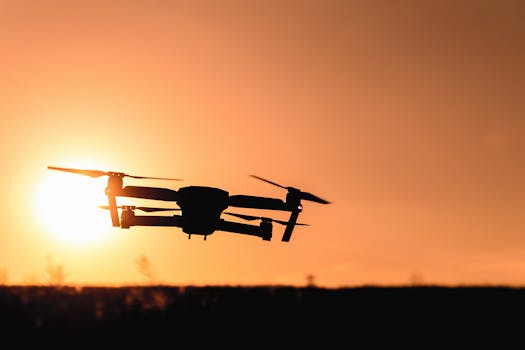Exploring the Possibility of Using Drones for the Rapid Delivery of Medicines and Urgent Medical Supplies
In recent years, the use of drones has expanded beyond recreational purposes and into various sectors, including healthcare. The potential for drones to deliver medicines and urgent medical supplies rapidly is gaining traction, especially in remote and underserved areas. This article explores the feasibility, benefits, challenges, and real-world applications of drone technology in medical logistics.
The Need for Rapid Medical Delivery
Access to timely medical supplies can be a matter of life and death. In many regions, especially rural and isolated communities, traditional delivery methods can be slow and inefficient. The need for rapid medical delivery is underscored by several factors:
- Geographical Barriers: Remote areas often lack adequate transportation infrastructure, making it difficult to deliver essential supplies.
- Emergency Situations: Natural disasters, accidents, and health emergencies require immediate access to medical supplies.
- Supply Chain Inefficiencies: Traditional supply chains can be slow, leading to stockouts of critical medications.
Benefits of Drone Delivery in Healthcare
The integration of drones into healthcare logistics offers numerous advantages:
- Speed: Drones can significantly reduce delivery times, often completing trips in a fraction of the time it would take ground vehicles.
- Cost-Effectiveness: While initial investments may be high, drones can lower long-term operational costs by reducing the need for extensive transportation networks.
- Accessibility: Drones can reach areas that are otherwise inaccessible due to terrain or infrastructure limitations.
- Real-Time Tracking: Advanced drone technology allows for real-time tracking of deliveries, enhancing transparency and accountability.
Case Studies: Successful Implementations
Several organizations have successfully implemented drone delivery systems for medical supplies, showcasing the technology’s potential:
1. Zipline in Rwanda
One of the most notable examples is Zipline, a California-based company that has been operating in Rwanda since 2016. Zipline uses drones to deliver blood, vaccines, and other medical supplies to over 21 hospitals across the country. Key achievements include:
- Over 300,000 deliveries made, significantly reducing the time it takes to receive blood products.
- Delivery times reduced from hours to minutes, saving countless lives.
2. UPS Flight Forward in the United States
In the United States, UPS Flight Forward has partnered with healthcare providers to deliver medical supplies using drones. In 2020, they launched a pilot program in North Carolina, focusing on:
- Delivering prescription medications to patients’ homes.
- Reducing the burden on pharmacies and healthcare facilities during peak times.
Challenges and Considerations
Despite the promising benefits, several challenges must be addressed for widespread adoption of drone delivery in healthcare:
- Regulatory Hurdles: Navigating airspace regulations and obtaining necessary permits can be complex and time-consuming.
- Technical Limitations: Drones have payload limits and battery life constraints that may restrict the types of medical supplies that can be delivered.
- Public Acceptance: Gaining trust from communities and healthcare providers is essential for successful implementation.
- Privacy and Security: Ensuring the privacy of patient information and the security of deliveries is paramount.
The Future of Drone Delivery in Healthcare
The future of drone delivery in healthcare looks promising, with ongoing advancements in technology and increasing interest from governments and private sectors. As regulations evolve and technology improves, we can expect to see:
- Expanded drone networks capable of covering larger areas.
- Integration with existing healthcare systems for seamless operations.
- Innovative solutions for overcoming current challenges, such as enhanced battery technology and autonomous navigation systems.
Conclusion
The potential for drones to revolutionize the delivery of medicines and urgent medical supplies is immense. With the ability to overcome geographical barriers, reduce delivery times, and enhance accessibility, drones can play a crucial role in improving healthcare outcomes, especially in underserved areas. While challenges remain, the successful case studies from around the world demonstrate that with the right investments and regulatory frameworks, drone technology can become an integral part of modern healthcare logistics. As we move forward, embracing this innovative approach could lead to a more efficient and responsive healthcare system, ultimately saving lives and improving patient care.
